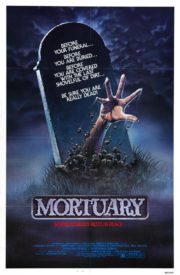A Whisper in the Thistle: Unveiling ‘Lord of Tears’
“Every nightmare has a beginning, but once you wake up, where does it go?” This haunting line from the 2013 Scottish horror movie ‘Lord of Tears’ invites viewers into a world where Celtic mythology meets psychological terror. Directed by Lawrie Brewster, the film spins a chilling tale about a schoolteacher, James Findlay, who is drawn back to his ancestral home by recurring nightmares and unsettling letters from his deceased mother. What ensues is a sinister entanglement with the supernatural that reaches beyond the veil of the waking world.
Shadows and Whispers: Crafting the Mood
Atmosphere and Tone: From the silhouetted barren trees against the grey Scottish skies to the decaying grandeur of the old mansion, ‘Lord of Tears’ weaves its horror through a tapestry of suspense and atmosphere rather than relying on visceral shocks. The director, Brewster, masterfully builds tension with a pacing that’s deliberate, allowing a sense of dread to increasingly suffocate the viewer as the protagonist delves deeper into the mystery.
Cinematography and Visuals: The film’s cinematography is a slow burn that utilizes the majestic and eerie Scottish landscape to its full advantage. Lighting is sparingly used, with shadows ruling the majority of scenes to cultivate a chilling sense of isolation. Camera angles are often just askew enough to instil discomfort, and there’s an ever-present mist that adds to the tactile quality of the visuals. While the special effects are not groundbreaking, the Owlman’s design is both unique and disturbing, haunting the frames in which it lurks.
Soundscapes of Fear: The soundtrack and sound design are integral characters in ‘Lord of Tears’. The music – sometimes a lone, sorrowful violin, other times a heart-thumping crescendo – effectively mirrors the emotional landscape of the film. Moments of silence are judiciously applied, making the sudden cacophony in frightful scenes all the more jarring. Interestingly, the sound sometimes plays tricks, melding with the Scottish highland setting to create an otherworldly ambiance.
Through the Owl’s Eyes: Cast and Horror Mechanisms
Performances: Central to ‘Lord of Tears’ are the performances, particularly that of Jamie Scott Gordon as James Findlay. His portrayal captures a vulnerability that makes the supernatural peril feel all the more threatening, grounding the horror in something painfully human. The supporting cast, while limited in number, bolster the central performance, adding layers to the narrative’s unfolding dread.
Horror Elements: The film dips its toes into psychological and supernatural horror, steering clear of genre clichés. Instead of cheap thrills, ‘Lord of Tears’ leverages folklore and the unsettling presence of the Owlman to foster primal fear. The horror mechanics here are decidedly psychological, with the occasional visceral imagery utilized not for shock’s sake but to serve the story’s grim tableau.
Underlying Themes: ‘Lord of Tears’ uses horror as a lens to examine deeper concepts such as the inescapability of one’s past and the confrontation with personal demons. These thematic elements add complexity to the film, elevating it beyond mere scares into the realm of thought-provoking cinema.
Curse of the Owlman: Final Verdict
‘Lord of Tears’ presents a haunting and atmospheric tale that will linger with viewers like the remnants of a bad dream. While it may not be the high-octane fright fest that some enthusiasts crave, its storytelling deftness and chilling ambiance are sure to resonate with fans of psychological horror and folklore.
Audiences with an appetite for slow-burning, character-driven horror that stokes the fires of the imagination will find much to appreciate here. However, those with a penchant for jump scares and gore may find it less enthranging. When held against the pantheon of horror greats, ‘Lord of Tears’ might not outshine the brightest stars, but it certainly glimmers with its unique blend of horror, myth, and melancholy.
Overall, ‘Lord of Tears’ proves to be a noteworthy addition to the indie horror scene, and an effective exercise in atmosphere-based terror. It is recommended for viewers who are looking for a horror experience that is as intellectually engaging as it is eerie. Be warned, the imagery, while not overtly gruesome, can be unsettling.
In the end, ‘Lord of Tears’ will not only ask you to stare into the abyss but whisper to you the things that might be staring back. For those willing to listen, it’s a horror journey well worth taking.




